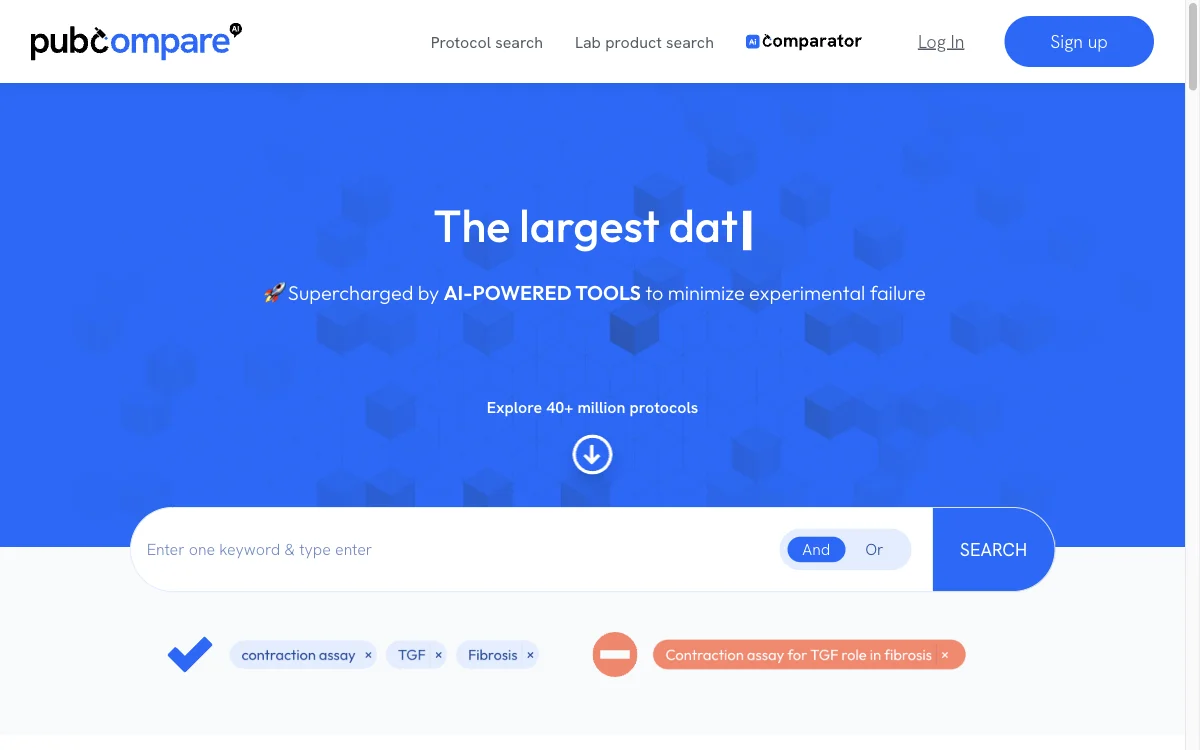PubCompare stands as a revolutionary platform in the realm of scientific research, offering an extensive database of over 40 million trusted experimental protocols. This AI-powered tool is designed to significantly reduce the risk of experimental failure by providing researchers with access to a wealth of proven methodologies. By leveraging advanced AI technologies, PubCompare enables scientists to efficiently search, compare, and analyze protocols, ensuring that their experiments are grounded in solid and reliable scientific practices.
One of the key features of PubCompare is its ability to facilitate side-by-side comparisons of multiple research publications. This functionality is particularly beneficial for evaluating studies on similar topics or treatment approaches, allowing researchers to quickly identify key methodological differences, outcome measures, and results across studies. Moreover, PubCompare aids in avoiding duplicate research, thereby saving valuable time and resources.
The platform has garnered praise from the scientific community for its impact on research workflows. Professors and researchers from various institutions have highlighted how PubCompare has transformed their approach to protocol exploration, making it easier to find the most suitable methodologies for their projects. The tool's intelligent analytical capabilities surpass human limitations, offering scientists a new level of insight and efficiency in their work.
PubCompare's mission is to empower scientists by providing them with the largest repository of trustworthy protocols and intelligent tools. This commitment to enhancing scientific research is evident in the platform's user-friendly interface, which is accessible from any computer without the need for downloads. With PubCompare, researchers can design robust protocols with confidence, knowing they have access to a wide range of reliable sources and cutting-edge tools.
Ready to revolutionize your research process? Sign up for PubCompare today and take the first step towards minimizing experimental failure and maximizing research efficiency.

